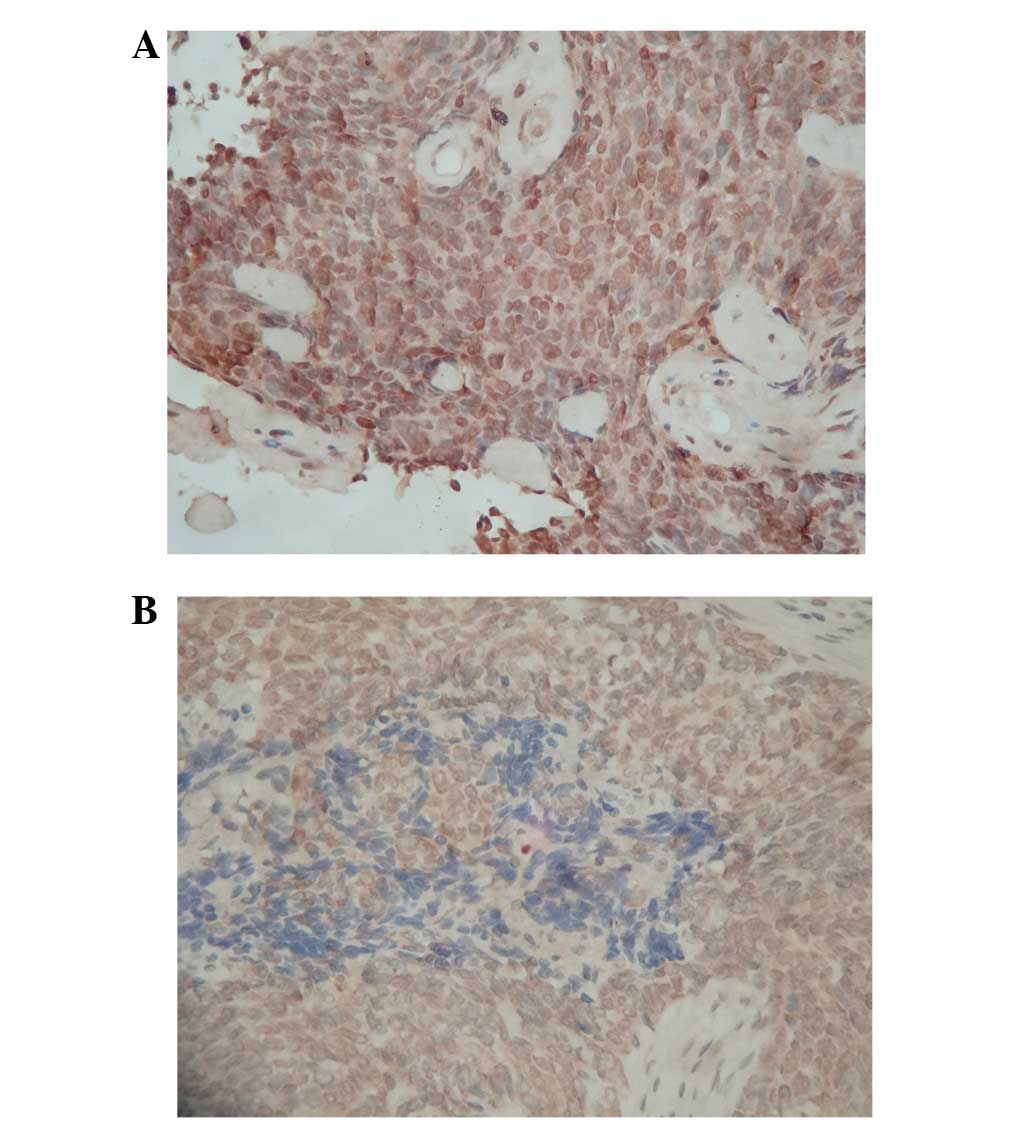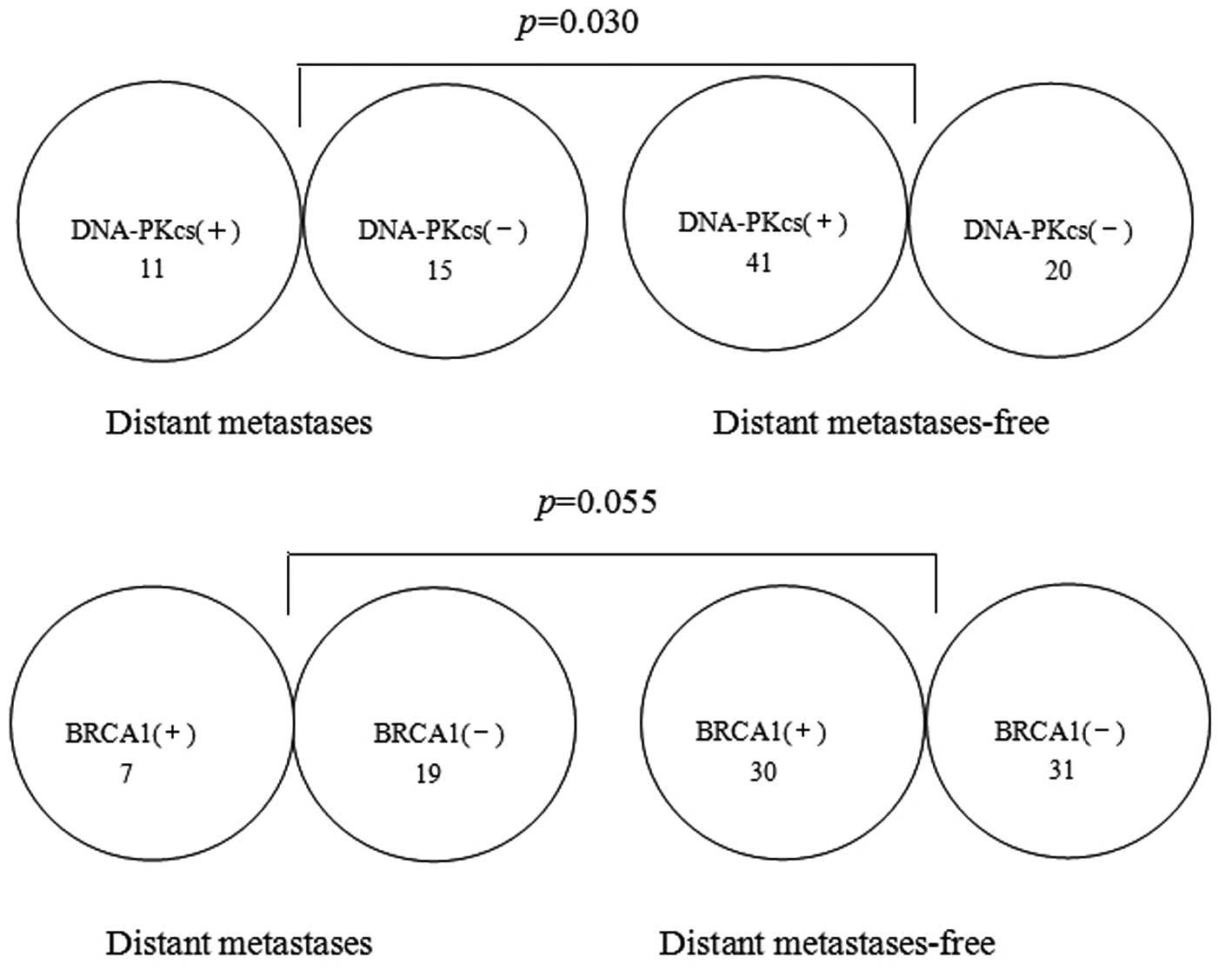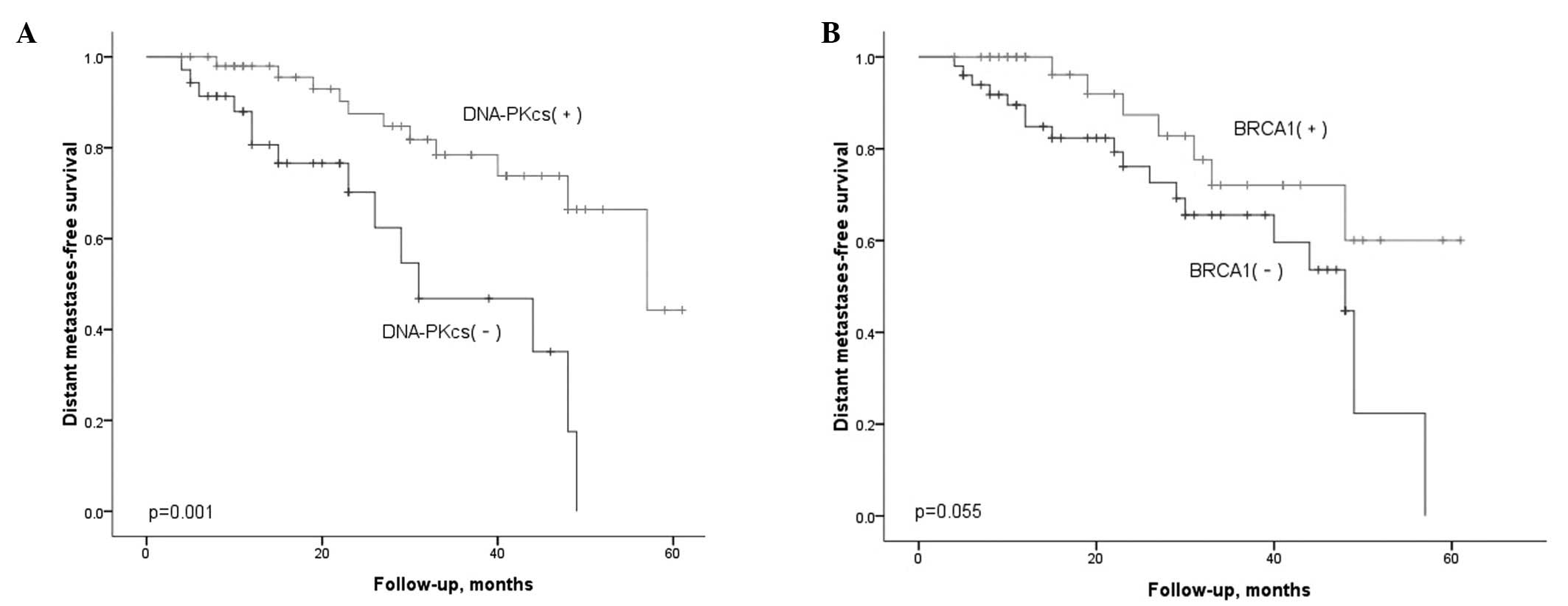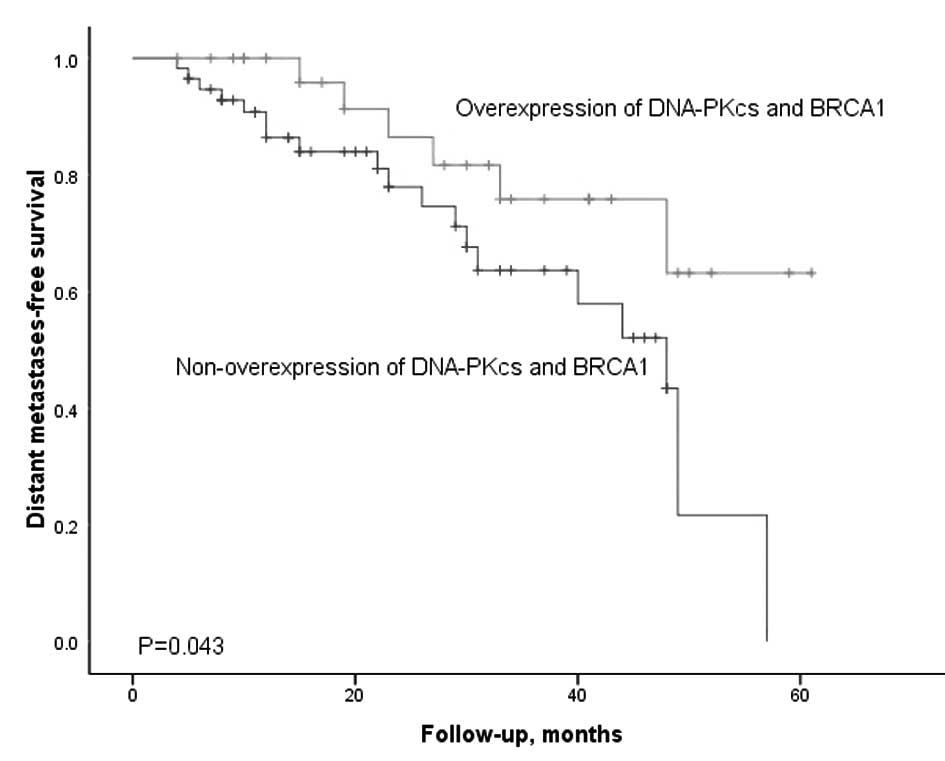|
1
|
Lee AW, Poon YF, Foo W, et al:
Retrospective analysis of 5037 patients with nasopharyngeal
carcinoma treated during 1976–1985: overall survival and patterns
of failure. Int J Radiat Oncol Biol Phys. 23:261–270.
1992.PubMed/NCBI
|
|
2
|
Collis SJ, DeWeese TL, Jeggo PA and Parker
AR: The life and death of DNA-PK. Oncogene. 24:949–961. 2005.
View Article : Google Scholar : PubMed/NCBI
|
|
3
|
Shrivastav M, De Haro LP and Nickoloff JA:
Regulation of DNA double-strand break repair pathway choice. Cell
Res. 18:134–147. 2008. View Article : Google Scholar : PubMed/NCBI
|
|
4
|
Weterings E and Chen DJ: The endless tale
of non-homologous end-joining. Cell Res. 18:114–124. 2008.
View Article : Google Scholar : PubMed/NCBI
|
|
5
|
Peterson SR, Kurimasa A, Oshimura M, et
al: Loss of the catalytic subunit of the DNA-dependent protein
kinase in DNA double-strand-break-repair mutant mammalian cells.
Proc Natl Acad Sci USA. 92:3171–3174. 1995. View Article : Google Scholar
|
|
6
|
Hsu HL, Yannone SM and Chen DJ: Defining
interactions between DNA-PK and ligase IV/XRCC4. DNA Repair (Amst).
1:225–235. 2002. View Article : Google Scholar : PubMed/NCBI
|
|
7
|
Lee JW, Yannone SM, Chen DJ, et al:
Requirement for XRCC4 and DNA ligase IV in alignment-based gap
filling for nonhomologous DNA end joining in vitro. Cancer Res.
63:22–24. 2003.PubMed/NCBI
|
|
8
|
Obe G and Durante M: DNA double strand
breaks and chromosomal aberrations. Cytogenet Genome Res. 128:8–16.
2010. View Article : Google Scholar : PubMed/NCBI
|
|
9
|
Kurimasa A, Ouyang H, Dong LJ, et al:
Catalytic subunit of DNA-dependent protein kinase: Impact on
lymphocyte development and tumorigenesis. Proc Natl Acad Sci USA.
96:1403–1408. 1999. View Article : Google Scholar : PubMed/NCBI
|
|
10
|
Hall JM, Lee MK, Newman B, et al: Linkage
of early-onset familial breast cancer to chromosome 17q21. Science.
250:1684–1689. 1990. View Article : Google Scholar : PubMed/NCBI
|
|
11
|
Quinn JE, Kennedy RD, Mullan PB, et al:
BRCA1 functions as a differential modulator of chemotherapy-induced
apoptosis. Cancer Res. 63:6221–6228. 2003.PubMed/NCBI
|
|
12
|
Kennedy RD, Quinn JE, Johnston PG and
Harkin DP: BRCA1: mechanisms of inactivaion and implications for
management of patients. Lancet. 360:1007–1014. 2002. View Article : Google Scholar : PubMed/NCBI
|
|
13
|
Laan R, Baarends WM, Wassenaar E, et al:
Expression and possible functions of DNA lesion bypass proteins in
spermatogenesis. Int J Androl. 28:1–15. 2005. View Article : Google Scholar : PubMed/NCBI
|
|
14
|
Harris JL and Khanna KK: BRCA1 A-complex
fine tunes repair functions of BRCA1. Aging (Albany NY). 3:461–463.
2011.PubMed/NCBI
|
|
15
|
Greene FL, Page DL, Fleming ID, et al:
AJCC Cancer Staging Manual. 6th edition. Springer-Verlag; New York,
NY: pp. 35–45. 2005
|
|
16
|
Hall EJ: Intensity-modulated radiation
therapy, protons, and the risk of second cancer. Int J Radiat Oncol
Biol Phys. 65:1–7. 2006. View Article : Google Scholar
|
|
17
|
Chen JX, Guo Y, Li Y, et al: Predicting
Radiation Sensitivity of Nasopharyngeal Carcinoma Using Genetic
Fingerprinting. Chinese Journal of Clinical Oncology. 34:1141–1145.
2007.
|
|
18
|
Friesland S, Kanter-Lewensohn L, Tell R,
et al: Expression of Ku86 confers favorable outcome of tonsillar
carcinoma treated with radiotherapy. Head Neck. 25:313–321. 2003.
View Article : Google Scholar : PubMed/NCBI
|
|
19
|
Ohta S, Lai EW, Pang AL, et al:
Downregulation of metastasis suppressor genes in malignant
pheochromocytoma. Int J Cancer. 114:139–143. 2005. View Article : Google Scholar : PubMed/NCBI
|
|
20
|
Lee HS, Yang HK, Kim WH and Choe G: Loss
of DNA-dependent protein kinase catalytic subunit (DNA-PKcs)
expression in gastric cancers. Cancer Res Treat. 37:98–102. 2005.
View Article : Google Scholar : PubMed/NCBI
|
|
21
|
Lee HS, Choe G, Park KU, et al: Altered
expression of DNA-dependent protein kinase catalytic subunit
(DNA-PKcs) during gastric carcinogenesis and its clinical
implications on gastric cancer. Int J Oncol. 31:859–866. 2007.
|
|
22
|
Someya M, Sakata K, Monobe M, et al: The
association of DNA-dependent protein kinase activity with
chromosomal instability and risk of cancer. Carcinogenesis.
27:117–122. 2006. View Article : Google Scholar : PubMed/NCBI
|
|
23
|
Someya M, Sakata KI, Matsumoto Y, et al:
The association of DNA-dependent protein kinase activity of
peripheral blood lymphocytes with prognosis of cancer. Br J Cancer.
104:1724–1729. 2011. View Article : Google Scholar : PubMed/NCBI
|
|
24
|
Azad A, Jackson S, Cullinane C, et al:
Inhibition of DNA-dependent protein kinase induces accelerated
senescence in irradiated human cancer cells. Mol Cancer Res.
9:1696–1707. 2011. View Article : Google Scholar : PubMed/NCBI
|
|
25
|
Zhuang W, Li B, Long L, et al: Knockdown
of the DNA-dependent protein kinase catalytic subunit
radiosensitizes glioma-initiating cells by inducing autophagy.
Brain Res. 1371:7–15. 2011. View Article : Google Scholar
|
|
26
|
Taghian A, Ramsay J, Allaunis-Turner J, et
al: Intrinsic radiation sensitivity may not be the determinant of
the poor clinical outcome of glioblastoma multiforme. Int J Radiat
Oncol Biol Phys. 25:243–249. 1993. View Article : Google Scholar : PubMed/NCBI
|


















